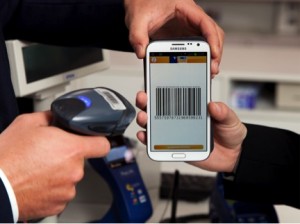The breakneck speed of life has consumers demanding instant access and instant gratification. Busy lives have fuelled the rise of “need it now” and “why wait?” Some call this new trend the FSTR HYPR mentality. The increasing expectation of speed has had a big impact on products and consumer marketing. Big industry is dependent on adapted products and services that amplify convenience and provide instant results. In the marketing world its time to either jump on the bullet train or be left at the station.
What is causing this need for speed?
What’s making life feel so hurried? Pressure at work plays a big part. The Organization for Economic Co-operation and Development (OECD) 2014 report shows that 11% of Americans work more than 50 hours per week. Mintel's Contract Catering UK October 2012 report also shows that only 26% of people take a proper break at lunch. By the end of the average work day patience and energy tend to be sparse resources for consumers.
Consumer technology is certainly one of the biggest forces in accelerating the speed and efficiency of life. It's unsurprising that online connectivity has made us more demanding of the brands and businesses we patronize. The Internet undoubtedly adds a U.S. component of ease to consumers’ lives.
Another facet of our FSTR HYPR lives: a rise in doing many things shallowly rather than just one thing deeply, as evidenced by our increasing tendency to multitask.
Mintel's Millennials Leisure Trends US February 2013 report found that 40% of all consumers say that "having a smartphone allows me to multitask while having fun during my leisure time", a figure that jumps to 63% among the Millennials.
What does this mean for Marketing and Advertising?
The speed and demand trend has resulted in a rise in web use and online shopping; however, ordering online means waiting for delivery, something patience-lacking consumers increasingly loathe doing.
On-demand lifestyles have weakened the influence of traditional advertising, creating a 'my ads, my choice' mindset where consumers expect to only be targeted with the messages that are relevant to them, and to choose when and how they see them. The opportunity, however, is in user-tailored, responsive advertising like Twitter’s Promoted Accounts service, which suggests a method brand users may wish to follow based upon their interests. Smartphone apps are also a rising trend to amplify consumer convenience.
Ultimately, brands must ask themselves where they stand in the FSTR HYPR society. While the tendency has been towards emphasizing immediacy and convenience, some have called themselves "slow" and said it with pride. As a business you must choose which is right for your brand: slow and steady or fast and now.
How to satisfy the time-stripped needs of the consumer
- Consumers want it now. Digital delivers instant gratification and physical products and services that strive to do the same and reach impatient consumers.
- Shortcuts win favor by delivering instant results and time savings. Consumers see time as a commodity and don’t want to waste it.
- Consumers perceive products in terms of speed, suggesting that brands might cover different time points as well as traditional price points.
What others are doing
Many industries have already adapted to the speed trend. Markets for things like online dating, healthcare (telehealth), online video streaming, are at an all time high. For example, the need for speed heavily influenced Netflix’s decision to start streaming movies rather than requiring subscribers to wait for them in the mail. But instant access to digital content is one thing; instant access to physical products is quite another. If a retailer can sort out the shipping logistics to guarantee same-day delivery, it’s likely to score a huge advantage over competitors. Physicians are leaving the confines of medical offices and walk-in clinics to see their patients online via Skype through telehealth. Telehealth amplifies consumer convenience and is showing success in its rising numbers. Even traditional dating is en route to be a thing of the past. According to research by the Pew Institute, 66% of online daters have gone on a date with someone they met through a dating site or app, and 23% of online daters say they have met a spouse or long-term relationship through these sites. It’s sink or swim time, folks. Now is the time to brainstorm ways to make your service or product more quick and convenient to consumers.





